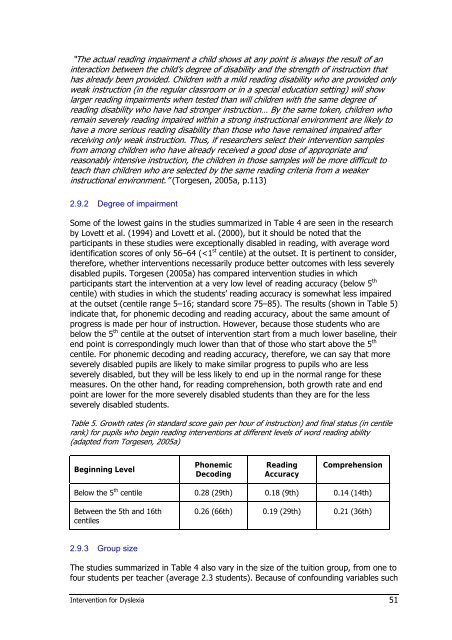Intervention for Dyslexia - The British Dyslexia Association
Intervention for Dyslexia - The British Dyslexia Association
Intervention for Dyslexia - The British Dyslexia Association
You also want an ePaper? Increase the reach of your titles
YUMPU automatically turns print PDFs into web optimized ePapers that Google loves.
“<strong>The</strong> actual reading impairment a child shows at any point is always the result of an<br />
interaction between the child’s degree of disability and the strength of instruction that<br />
has already been provided. Children with a mild reading disability who are provided only<br />
weak instruction (in the regular classroom or in a special education setting) will show<br />
larger reading impairments when tested than will children with the same degree of<br />
reading disability who have had stronger instruction… By the same token, children who<br />
remain severely reading impaired within a strong instructional environment are likely to<br />
have a more serious reading disability than those who have remained impaired after<br />
receiving only weak instruction. Thus, if researchers select their intervention samples<br />
from among children who have already received a good dose of appropriate and<br />
reasonably intensive instruction, the children in those samples will be more difficult to<br />
teach than children who are selected by the same reading criteria from a weaker<br />
instructional environment.” (Torgesen, 2005a, p.113)<br />
2.9.2 Degree of impairment<br />
Some of the lowest gains in the studies summarized in Table 4 are seen in the research<br />
by Lovett et al. (1994) and Lovett et al. (2000), but it should be noted that the<br />
participants in these studies were exceptionally disabled in reading, with average word<br />
identification scores of only 56–64 (









